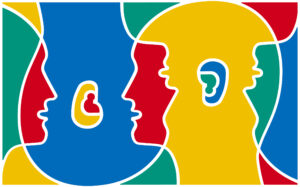Languages that are not genetically related. Perhaps you grew up surrounded by a family – close and distant relatives. By analogy with our family relationships, many languages of the world are united in families.
However, it happens that a person has no relatives and translate english to tagalog correct grammar at all. It is quite logical to ask a simple question: are there languages that somehow escaped family unification and have no kinship with other languages?
The origin of writing took place about 5000 years ago. The first written monuments – cuneiform texts – were discovered around 3100 BC. NS. The language of these texts is not associated with any other ancient or modern language. The Sumerian language, which for millennia had been the language of high culture in Mesopotamia, was supplanted by the Akkadian language. In the 2nd millennium BC. NS. Colloquial Sumerian fell out of use, but for another 2000 years it was included in the school curriculum.
Perhaps the most mysterious of the ancient languages is Etruscan. Its origins and linguistic affiliation are still a matter of debate. It was spoken in Italy from the 7th century BC. NS. to the 1st century A.D. NS. And although scholars and priests continued to study it, during the time of the Roman Empire, it passed into the category of dead languages. Despite all attempts to determine its relationship with other languages, the genetic origin of the Etruscan language has not been conclusively established. Perhaps it belonged to the group of Mediterranean languages and was discovered by the Indo-Europeans upon their arrival in southern Europe (3000-2000 BC). The language was completely supplanted after a millennium.
There are other long-extinct languages, but only linguistic historians know about them. In this regard, the question arises: are there among modern languages those that do not have any kindred ties?
Yes, such languages exist, they are isolated languages. Undoubtedly one of the most well-known languages in this category is Basque (Basque Euskara). It is spoken by about 580,000 people, most of whom live in Spain. This language does not belong to any language family, but some scholars believe that it has some connection with the ancient Iberian language discovered by the Romans on the Iberian (Iberian) Peninsula.
Burushaski is spoken by about 60,000 people, mostly in Pakistan and partly in India. The exact genetic relationship of this language has not been established, however, some similarity with Indo-European languages can be traced, probably resulting from the interaction of peoples in ancient times.
Ainu is spoken by some of the inhabitants of Hokkaido, Japan’s northernmost island. Today the number of Ainu is very small. Genetically and culturally, they have nothing to do with Japanese and Japanese.
In Eastern Siberia, there are two languages that have no kinship either with each other or with other languages. The Yukaghir language is spoken by less than 100 people, therefore, it is close to extinction. Gilyak is spoken by about 400 people, and the younger generation prefers to communicate in Russian.
Many of the languages of North America that were spoken among the indigenous population at the time of the arrival of the Europeans are already dead. There are at least four isolated languages that disappeared in the 19th century. Of the many native languages of the North American continent that exist today and are united in families, three well-studied languages do not belong to any language family.
Kutenay is the language of the inhabitants of the northwestern region, spoken mainly in British Columbia and partly in the United States. The history of this language is similar to many others: about 100 native speakers are already in old age, and young people prefer English.
The most optimistic picture emerges for the two languages of Native American culture, whose speakers live in the southwest of the continent, mostly in the center of New Mexico. The Keres languages are spoken by about 8,000 people. Some languages are popular with all age groups, while English is increasingly preferred by the younger generation of speakers of other languages. The Zuni language is spoken by about 6,500 people, including children, therefore, the language cannot be called endangered.
Many of the hundreds of languages in Central and South America are still unexplored. In particular, the genetic affiliation of a huge number of Amazonian languages has not been established, so they can be confidently called isolated.
Don’t you think there are too many “orphans”? There are fewer than 50 languages worldwide that do not belong to any family. On the contrary, it is striking that there are so few of them: if less than one percent of all languages in the world are still not combined into families, then the successful classification of the remaining 99 percent is truly impressive.

